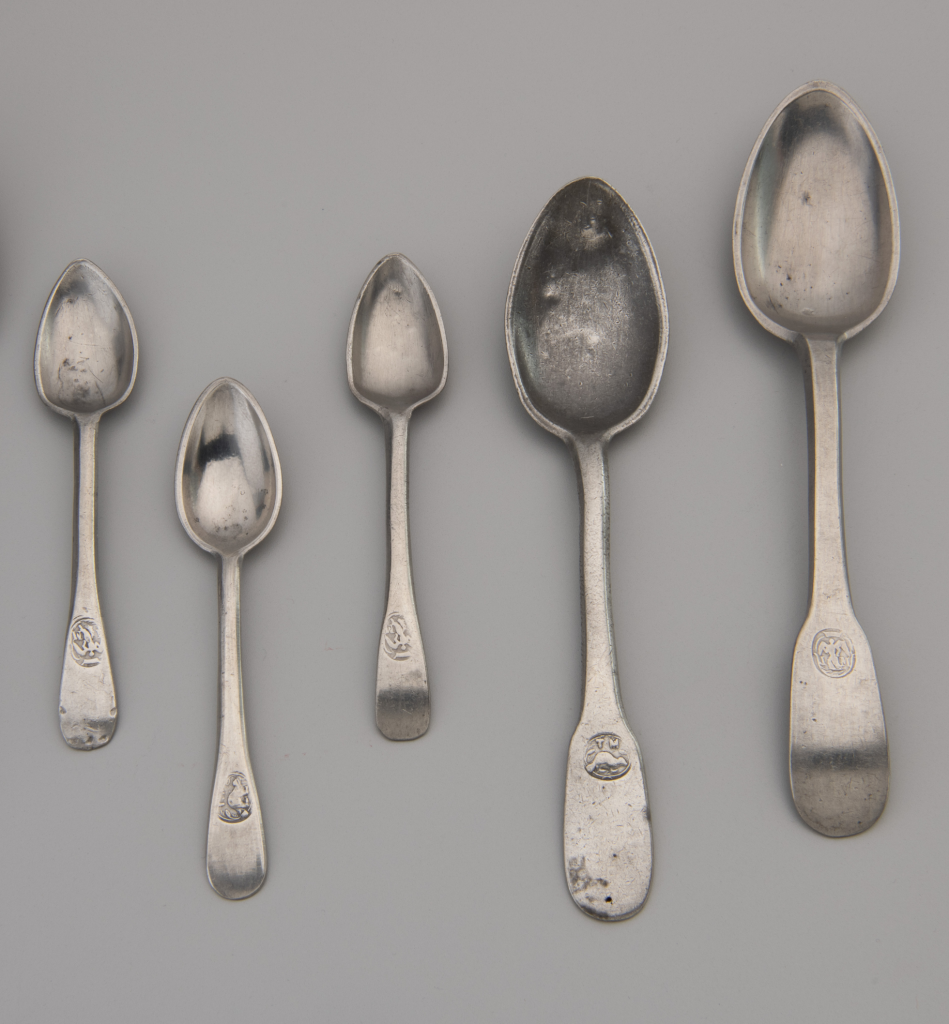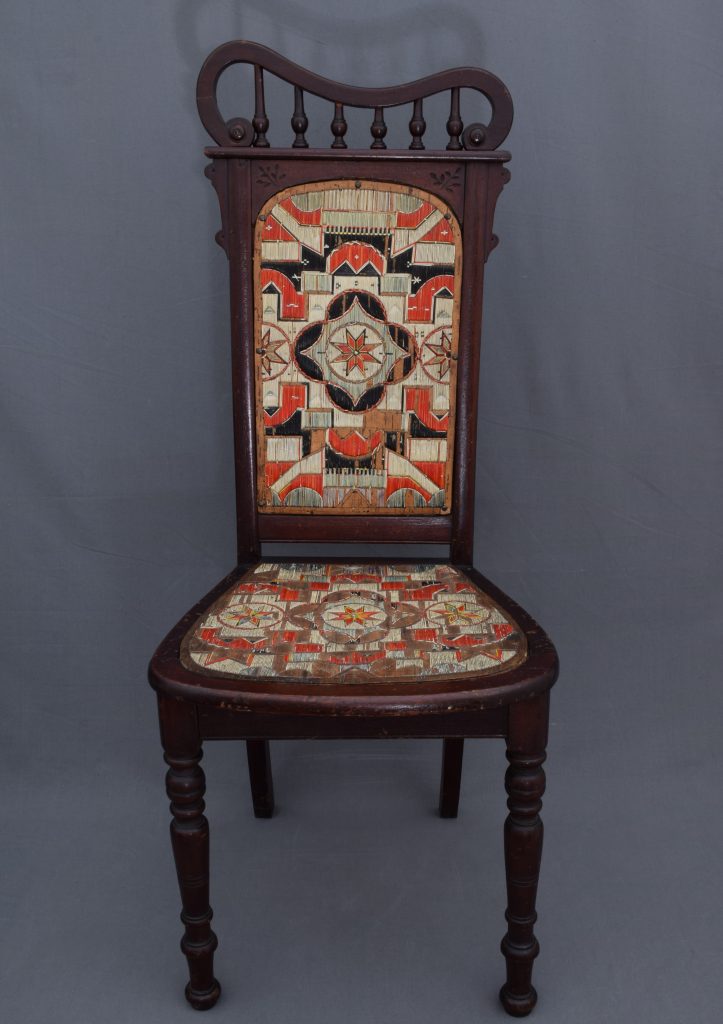Folk art has enjoyed a long and rich history in Quebec. Once viewed as something of an oddity and treated as an unskilled form of artistic expression, long-held beliefs about folk art started to change in the 20th century. Academics began studying the importance of such pieces, not simply as works of art created despite a lack of formal training, but because folk art also provides important insight into many things: popular aesthetics, community history and individual artistic vision.
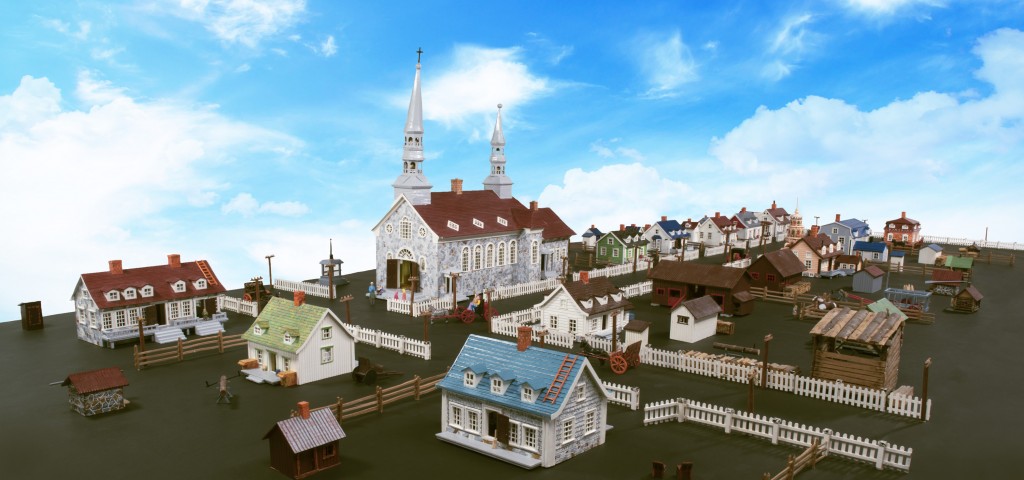
A view of the whole miniature village of St-Jean Port Joli, highlighting the town’s impressive church (centre left), as well as the local farm and stables (right). Canadian Museum of History, IMG2015-0289-0001-Dp1
Recently, I was given the opportunity to work on a project featuring one of the Museum’s many folk art pieces. As the new Curator of Craft, Design and Popular Culture, I jumped at the chance to spend some quality time with this impressive work and to sink my teeth into the wonderful collections of which I am now steward.
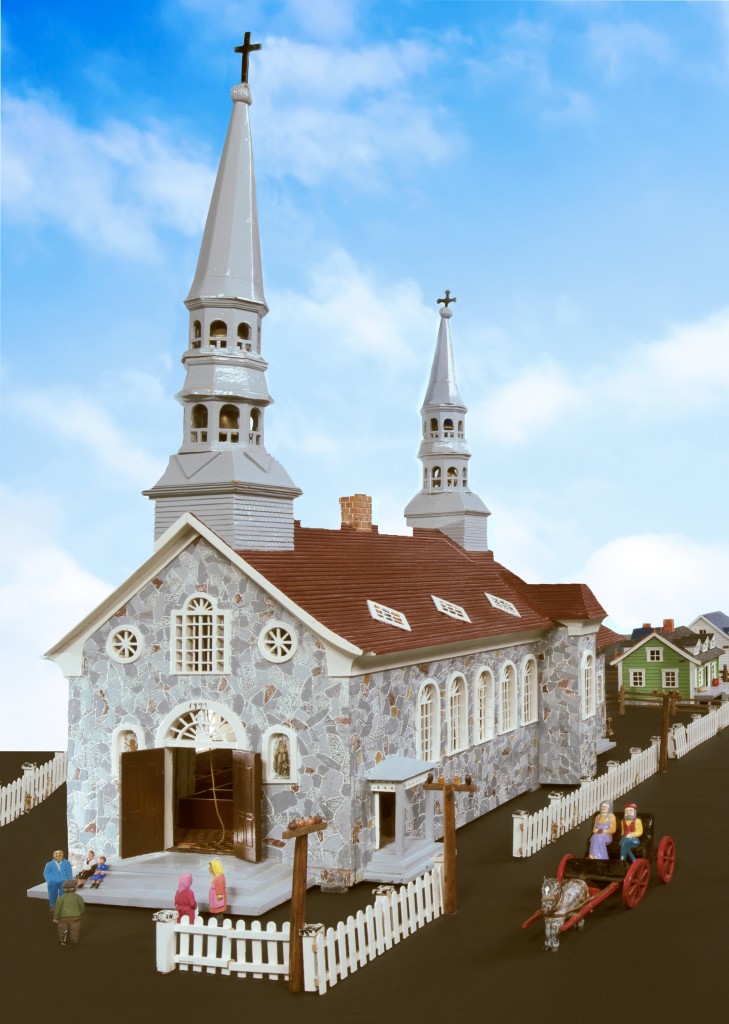
The miniature St-Jean-Port-Joli church. The interior is fully carved and painted to reflect the town’s actual church. Canadian Museum of History, IMG2015-0289-0002-Dp1
The work of folk art in question is actually 262 separate wooden carvings that, when assembled, become a miniature re-creation of the village of Saint-Jean-Port-Joli. In 1929, Jeanne Bélanger-Robichaud, a local hairdresser in the small Quebec village, began carving a miniature of the town’s church as an ex-voto — an offering to the divine — in gratitude for her daughter’s recovery from a serious illness. Standing a little over 4 feet tall, the church was a painstakingly carved miniature with a carefully re-created and electrified interior.

A horse and buggy on the main street. Notice how the people are not in proportion to the rest of the carvings. Playing with proportions and pushing the boundaries of realism are important characteristics of folk art. Canadian Museum of History, IMG2015-0289-0004-Dm
The miniature church was so impressive that Jeanne began receiving requests from neighbours to produce carvings of their homes. Over the next 41 years, Jeanne gradually carved the homes, cabins, stables and farms of her village. She also eventually produced miniature telephone poles, fences, woodpiles and horse-drawn carriages, re-creating her village down to its smallest detail. Finally, local woodcarvers — founders of the popular Saint-Jean-Port-Joli school of woodcarving — made dozens of tiny villagers, breathing life and humour into the miniature town.
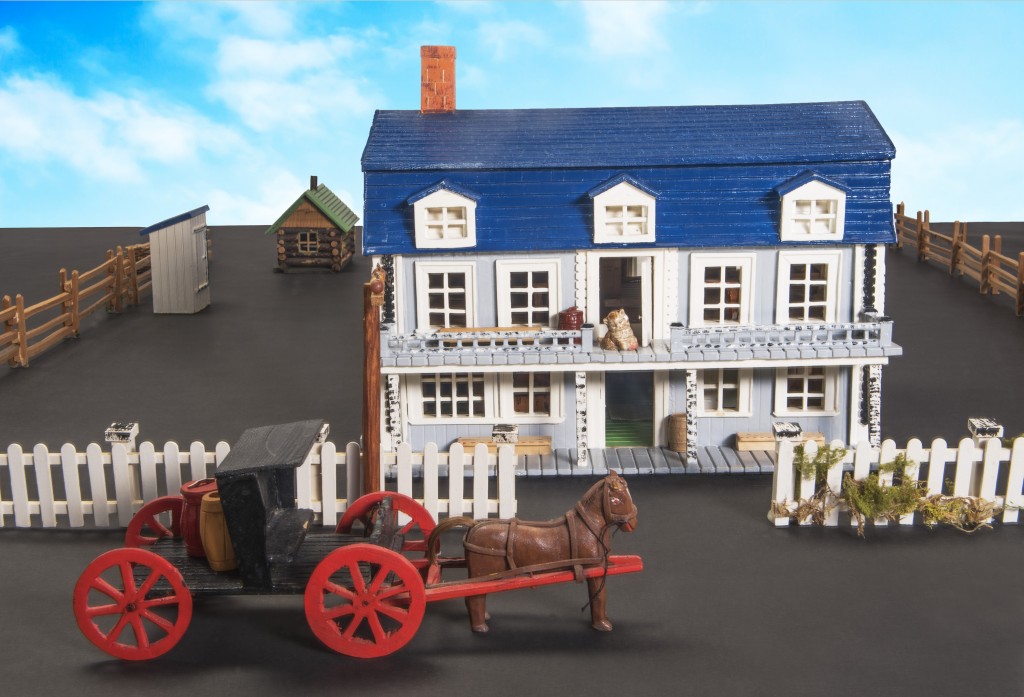
A close up of the home of villager George Gagnon. Canadian Museum of History, IMG2015-0289-0006-Dm
This impressively carved village touches upon many aspects of Canadian heritage and culture. It reflects an important religious tradition, while also highlighting the whimsical aesthetics of Quebec folk art in the 20th century. Although the village boasts more than 200 impressive little carvings, its real beauty is most evident when the whole village is assembled. Only then can you truly appreciate Mme Belanger-Robichaud’s creativity.
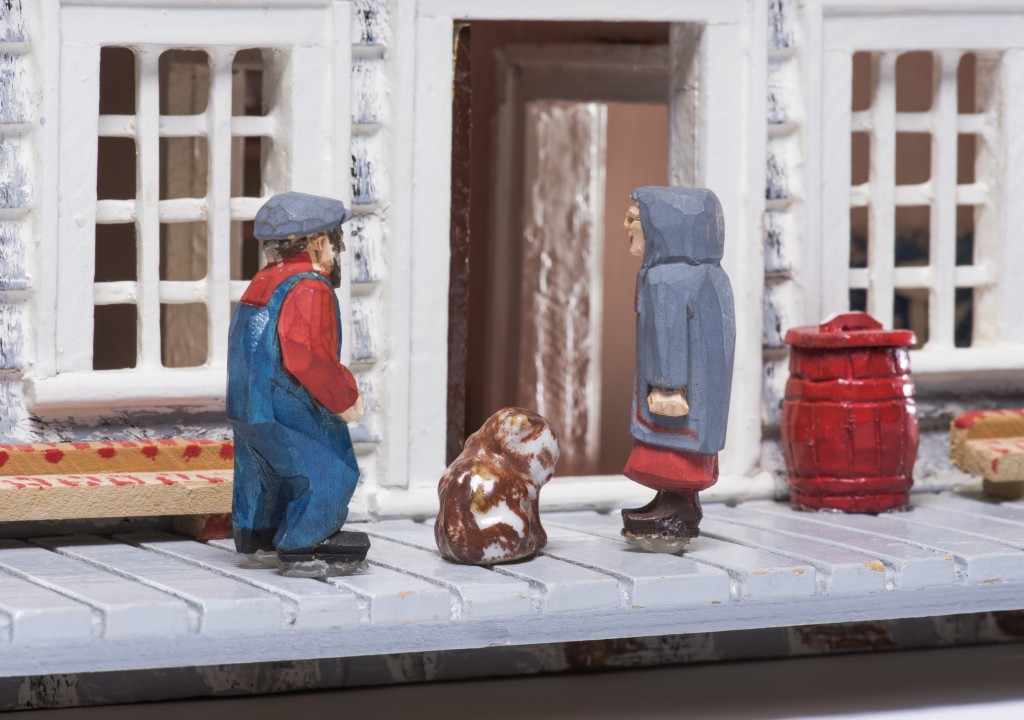
A close up of the front porch of a home featuring two small carvings of townsfolk. The ceramic cat is a small gift-with-purchase found in a box of Red Rose tea. Canadian Museum of History, IMG2015-0289-0007-Dm
Do you know of a piece of folk art that speaks to the history and heritage of your community?


